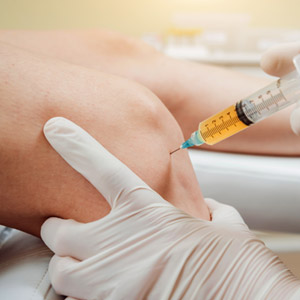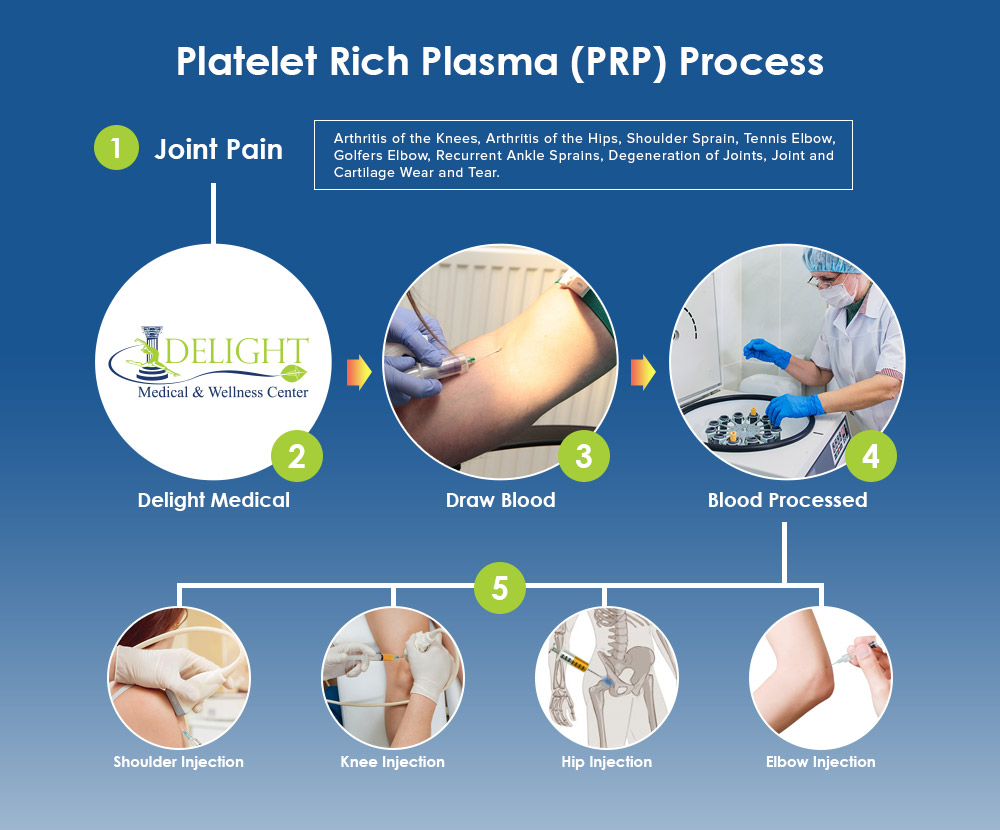Platelet Rich Plasma (PRP) Injections in Santa Monica and Los Angeles
 Platelets cells in our blood have amazing reparative capabilities. These reparative capabilities can be used to repair any tissue damage in our body.
Platelets cells in our blood have amazing reparative capabilities. These reparative capabilities can be used to repair any tissue damage in our body.
These platelets have been extremely useful in the past 15 years for repairing and regenerating our musculoskeletal system parts such as muscles, ligaments, tendons, cartilage, joint capsule, and even joint fluid.
A practical example of common knowledge:
When a sharp tool cuts our skin, how does our skin heal so fast within one week? The answer is platelets! Once the skin is cut, platelets rush to the area and aggregate as a team of construction workers and release their growth factors and reparative factors to heal the chain wound and REPAIR it. It is simply and solely because of platelets amazing reparative capabilities that a cut in our skin is healed as quickly as it does.
Science and scientists along with the medical community has just recently in the last 20 years figured out that if platelets can heal the skin so fast, we can use them to correct a lot of other degenerative and musculoskeletal problems such as:
- Degenerated cartilage in:
- Arthritis
- Degenerative Joint Disease
- Wear and Tear of Joints
- Micro sprain of ligament in:
- Sports Injuries
- Sprained joints
- Micro-sprains of tendons in:
- Tendinosis
- Tendinitis
- Partial Tendon Tears
- Muscle Micro-Sprains in:
- Muscle Injury
Medical jargon on what makes PRP work:
PRP factors such as VEGF, PDGF, TGF-beta-1, FGF, EGF, IGF, HGF, fibrinogen, fibronectin, Vitronectin are the powerful growth factors that serve and function in the very important collagen synthesis process. Angiogenesis, cell migration and proliferation, tissue matrix formation, angiogenesis and fibrin formation are part of the physiological factors of PRP which are also a vital part of the collagen synthesis process.
The above are all very important functions that help torn, sprained, damaged, or degenerated ligaments, tendons, or cartilage to be repaired and restore to its original function.

When should you consider PRP?
- When your physician suggests steroid injections — say no and consider PRP
- When your physician suggests pain medications — say no and consider PRP
- When you have been told it takes time to heal — consider PRP
- When you have been told “it’s either steroids or surgery” — consider PRP
- When you have been told that you need physical therapy— consider PRP
- If you have knee arthritis — consider PRP
- If you have hip arthritis — consider PRP
- If you have shoulder pain— consider PRP
- If you have tendinitis— consider PRP
- If you have any joint problems or weakness– consider PRP
How does Dr. Kerendian Utilize PRP?
Dr. Kerendian believes in comprehensive and personalized care. With his specialty in the field of osteopathic medicine and regenerative medicine, he has successfully treated where other practitioners have failed to achieve. The reason for this is that he makes his treatment plans with a variety of different tools rather than using the same tool for every problem that he sees. After an in-depth interview and an examination of your problems, he will evaluate and recommend a comprehensive treatment approach to return your function as close to 100% as possible.
PRP may be combined with either of the following:
- Osteopathic Manual Therapy
- Trigger Point Injections
- Prolotherapy
- Muscle Stimulation Therapy
What are the most useful indications to have PRP?
- Arthritis of the knees
- Arthritis of the hips
- Shoulder sprain
- Tennis Elbow
- Golfers Elbow
- Recurrent Ankle Sprains
- Degeneration of joints
- Joint and Cartilage wear and tear


